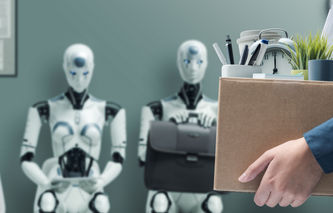The best leaders know when a given style is most effective. In this article, the focus will be on the autocratic leadership style. We'll discuss its strengths and weaknesses, as well as the circumstances that make this style most effective. At the extreme, autocratic leadership can take the form of a dictatorship. In this situation, the leader's word is "law." The typical autocratic leader does not involve their followers in the decision-making process. This type of leader might resort to force, manipulation, or even threats to accomplish their goals.
Pros and Cons of Autocratic Leaders
| Additional Resources |
| Affiliative Leaders Authoritative Leaders Charismatic Leaders Coaching Leadership |
Unfortunately, there aren't a lot of positive things to say about autocratic leaders. This style can be very stressful on fellow employees, and the work environment will oftentimes be rather unpleasant. But like all leadership styles, there is a time, and a situation, where the style is both appropriate and effective.
Cons
The communication style of an autocratic leader is usually described as one way. They tell their followers exactly what they want done. The feedback received from this type of leader would usually be unplanned. They would simply tell a follower when they've made a mistake. The decision-making process is usually unilateral, and they accomplish goals by directing people. These attributes might not sound like the type of leader someone would follow, but there are situations when this style is very effective.
Pros
In the workplace, some operating conditions may call for urgent action. In these cases, an autocratic style of leadership can be the best style to adopt. Surprisingly, many individuals have already worked for an autocratic leader, and therefore have little trouble adapting to that style.

In fact, in times of stress or emergency, subordinates may actually prefer an autocratic style. They like to be told exactly what to do and are grateful someone is stepping up and taking control of what might be a chaotic situation. The autocratic leadership style is very effective when critical business decisions or actions are needed, but very stressful on followers or coworkers when the added pressure is no longer necessary.
Examples of Autocratic Leaders
While the notion of being labeled an autocratic leader might not seem flattering to most individuals; we do have two examples of autocratic leaders. This is not to say they exhibited this style constantly, only that these particular individuals gained notoriety for exhibiting this style.
Martha Stewart
She built her empire with personal attention to every detail. Whether you admire Martha Stewart or not she was meticulous and demanding. She was also very successful in her endeavors, and oftentimes used an autocratic management style. Many industry analysts might argue that it was Martha's autocratically demanding style that allowed her to flourish in the entertainment industry, which is an extremely competitive environment. Others might argue that even more success might have awaited her if she had not relied so heavily on such a demanding and potentially damaging style.
Howell Raines
Newspapers and companies in heavy industries often flourished under autocratic leaders that stood watch over workers, making sure their factories kept humming. It might not be easy to work under these circumstances, but the autocratic leadership style is certainly efficient. Howell Raines was the Executive Editor of the New York Times from 2001 until 2003. Widely cited as a "hard-charging" Executive Editor, Raines was known for his policy of "flooding the zone," using all of the New York Times' resources to cover what he deemed were important stories. Howell Raines is a classic example of how an autocratic style can be used successfully in a highly-demanding industry. The daily pressure associated with publishing one of the highest quality newspapers in the world is extreme.
Autocratic Leaders in the Workplace
Several studies suggest that organizations with many autocratic leaders have higher turnover and absenteeism than other organizations. With today's emphasis on joint decision-making and empowerment, employees just entering the workforce will be highly resistant to this management style. The autocratic style should not be used when a leader wants to get their employees engaged in the decision-making process. It's also not effective in situations where employees might become resentful or fearful. Finally, if a company is struggling with low morale, or is interested in building employee relationships, an autocratic leadership style will only serve to further degrade the work environment.
About the Author - Autocratic Leadership


